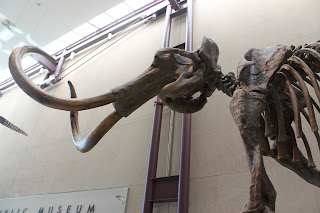Reading 10: “Different ways of learning from Museums” it is personal blog and expression of Saul. He generalises what people can study from museums, matter of individual interest in subject, choice of subject and exhibit. For me personally, anything learning starts with curiosity of subject first and obviously there should be interest, without interest. That means pizza without cheese.
Next is sharing information with friends or others person means exchanging and having dialogue on subject matter broadens owns thinking level on subject matter. It’s natural to have more information seeing the museums with different lens. The personal choice of interest defines the subject matter to dig in the information displayed in the museum or any subject matter.
The writer observe different techniques of displaying the subject matter, labelling- written descriptive manner, audio tour, guided tour, uses of multiple languages, computer interfaces- touch screen. Each technique has its advantages and disadvantages of conveying the information. The designer ‘s choice of display is to tell the larger audience its hidden story in presentable format, which should be coherent with whole exhibition.
The writer basically states the shortfalls i.e., the guided tour: fixed timetable conflicted with timetable, the computer touch screens functioning slowly or dead. I don’t think these are big issue. These guided tour and computer screen technique are more interactive method to connect with the audience and give tons of information. So it’s all personal choice of how to learn from Museum. My goal/ intention of visiting Milwaukee Public Museums & Discovery world this week was in conjunction with academic viewpoint, There was goal set-up for the purpose of visiting. This was entirely different experience than visiting with family members. So it is how you view the world in what time frame, condition and purpose, the answer may not be same for all, but i guess all the answers are true.
Hebior Mamoth
Reading 11: “What Museums Cost Visitors—and Lessons for Information Architects and Information Designers “, the blog starts with bunch of information how visitor can get access to museum, its admission fees, discount fee for student, teacher, membership and pass system. I guess this information can be easily accessible from the particular website of museum. Admission fees are generally priced according to the operation cost and expected profit margin of the museum. The permanent exhibit has its own importance for the Museum to market its product, and changing exhibit add more flavour which attract larger section of audience and gives more momentum to understand new subject matter.
The main point of the blog is to take idea from the museum charging for special exhibit, similar can be applied in the case of information architects/ webpage designer in website to charge certain fees to access the information. It’s good to generate revenue and become sustain for hosting website and which can be refuelled with better resources as a whole. It is basically providing the service on exchange of monetary form, so the service should fulfil customer’s expectation what he needs. There are many sites which gives access to general facilities of its sites, but charges for additional services e.g. www.hulu.com, www.linkedin.com. In academic journal, they are only available after paying certain fees and they are successful.
